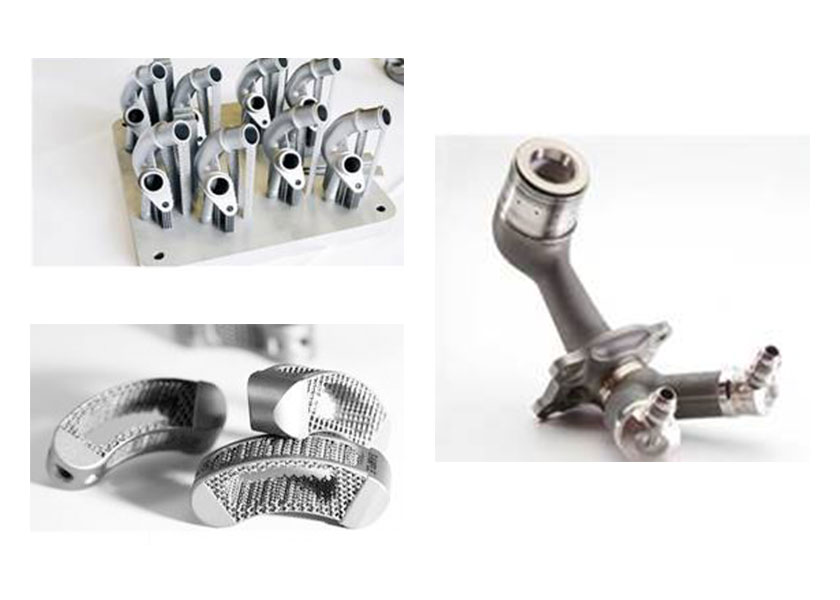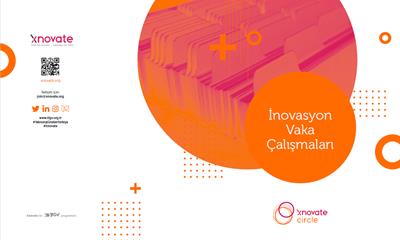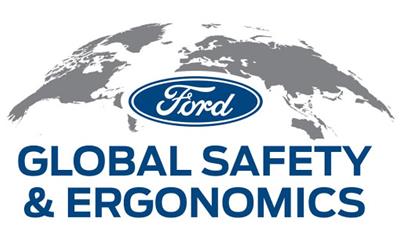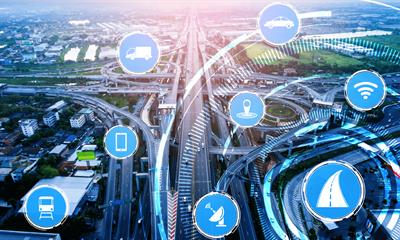
Printing the Future with 3D Printers!

We have been using the efficient output of 3D printers, which are seen as one of the most important developments of the fourth industrial revolution, since 2006, and from now on, we will use much newer technologies with much more efficiency!
This state-of-the-art technology offers the possibility to actualize and produce part designs that we cannot even imagine, using existing production methods, with endless design possibilities without any molds.
Product Development of the first 3D printer in our company started to be used in Design Studio in 2006. As of 2015, our company investments have gained speed in parallel with the development of technology. There are currently 10 3D printers spread in each of our premises thanks to the investments made over the years.
With these machines; we produce prototype parts, fixtures used in production, apparatus for work safety and ergonomics projects, and materials needed for social responsibility projects. We owe to these machines that enabled us to quickly put into practice the creative solutions we need a lot; especially during the pandemic period we are in; such as masks, visors, and handles to open doors free of contact.

Our team, working on stratified production in collaboration with R&D, Tool and Die, Assembly, and New Projects; follows the technology closely and produces solutions for our company's needs. Thanks to the fact that one of the most important distinctive advantages of additive production is the ability to produce without the need for molds; we are currently working intensively to produce low-volume special vehicles and after-service production parts, and we have been taking advantage of the opportunities offered by 3D printers in additive production technology for a long time. We will now continue our journey with a solution partner that increases our technological options and offers different alternatives flexibly according to our needs.
We signed a contract with Poligon Engineering in line with our "Openness to Change and Innovation" value within our Dynamic Balance common culture, so that all our units can use this advanced technology. As our cooperation with Poligon Engineering develops, we will take more determined steps towards the production of the future. We believe that the achievements we have gained through additive production will create greater opportunities in the future.

How will we seize these opportunities?
- Firstly, we will produce low volume complex geometrical parts by additive production method.
- In order to achieve this goal, we determined our parts through our Service, FCSD, and SVE tools, and the feasibility and part validation performance test processes of these parts are in progress.
- We also carry out our work on Metal Print.
- We have started to work on the additive production of metal brackets with different geometries and forms used in product development processes.
- We are also working on Digital 3D Portal with our IT unit to serve all our factories. In this way, we aim to carry out requests, part production, and follow-up of all these from a common platform.
What opportunities does additive production offer us, and how does it set goals?
- Our supply processes will speed up, and we will be able to produce parts with Cad data from different and remote locations. This will be very important in the future, especially in need of spare parts.
- Our localization opportunities will increase. We will be able to produce the parts that are produced in remote areas ourselves.
- As you know, weight reduction is one of the most important issues which affects even fuel consumption. Additive production opportunities will also provide the chance to reduce weight by making part design changes.
- It will be possible to design and produce many parts as one piece with the additive production design method using topology.
- With this technology, the opportunity will be created to make customer-specific parts in line with customer demands (customization).
- Within the scope of our digital factory vision, we will come into a position that we will produce mass production parts with digital additive production stations built on the edge of the production line and we will be able to attach these parts to the vehicles.
An overview of the 3D printer technology
Additive production processes come up with 3D printers. Layer sections are formed by being added together at predetermined resolutions. For this reason, the production made with 3D printer technology is called "Additive Production". It is a form of production that is rapidly put into use by sectors such as health, automotive, technology, durable household appliances, which have specifically standardized products.
When we look at the automotive sector in particular, we can see the possibility of "Additive Production" with 3D printers in a wide range from prototype and mold making processes to spare parts production processes.
Let's talk about the advantages and disadvantages of this production method.
One of the most important constraints regarding 3D Printers is the lack of variety in terms of material, color, and surface features; the low durability of the products in terms of temperature, humidity, and fragility, and the increase of the product size resulting with the increase of cost when produced with additive production.
However, the advantages of 3D printers are much more: Firstly, since digital data is used, it can easily be transferred and shared. Procedures such as changes and corrections can be done much faster. The fact that the product price can be determined prior to production is an important feature. The use of recyclable materials and minimum waste of materials also provide significant benefits as a sustainable solution.
How was it until today, how will it be tomorrow?
We have been using this technology in our related units since 2006. As you know, technologies are developing day by day, and using up-to-date technologies in terms of cost can be challenging for large-scale businesses. Within the scope of the contract we signed with Poligon Engineering, we will use the most up-to-date technologies comprehensively.
What are these technologies?
We are talking about a technology that can be used by all units within our company with a total of five different printer models working with three different system principles. We have just talked about production and spare parts while defining the use of "Additive Production" in the automotive industry, but this definition is actually incomplete. Because we will be able to use this technology to produce all promotional products or various apparatus for the processes from Corporate Communications to After Sales. Therefore, which unit you belong to is not important; what you want to print and produce becomes important here.
Let's make a brief introduction to five different printer models:
Multi Jet Fusion (MJF)
It is the licensed technology of the HP brand that has entered the market with a technology that moved mountains in the 3D Printer industry in the past years. Combining the speed of up to 10 times compared to conventional powder-bed systems with the economic production advantage brought by the flexible and functional PA12 material it used, MJF has acquired a considerable portfolio in the market in a short time. Polyamide powder particles are evenly laid in the preheated production chamber. The material named Fusion Agent is applied to certain sections in the current layer through the print head, with the fast spray system that HP has obtained as a result of more than 100 years of printing know-how. In order to increase the resolution of the part, the auxiliary material named Detailing agent is sprayed on the sections with a similar principle.
Digital Light Synthesis (DLS)
DLS, a revolutionary innovation just like MJF, is a technology introduced by Carbon to the 3D printing industry. Although it has similarities to its predecessors, SLA and PolyJet technologies; it differs with its high speed, high material performance with two components, and surprisingly economical unit part prices offered in low-volume mass production. This technique allows about 50 times faster production compared to conventional resin-based systems. It is based on the principle of layer-by-layer curing of sections of CAD data through a light source located under a reservoir filled with photopolymer resin. Thanks to the upward movement of the production platform, which is positioned against gravity, in the Z-axis; productions can be completed within minutes.
Fused Deposition Modeling (FDM)
FDM is the most widely used 3D printing technology in the world, which was commercialized in the early 90s and we have started to hear a lot more about it after the expiration of the usage rights in 2008. It provides the desired geometry to be produced by piling layer by layer the solid plastic material which is semi-melted under high temperature through a print head moving on the Cartesian axis. Although it is seen that ABS and PLA oriented materials are used extensively, we observe that every year new materials are adapted to FDM technology. In fact, many different materials; from wood to metal, from composite to concrete; can be shaped by this method through the use of auxiliary processes. Over time, due to the fact that the entry barriers are not very high to enter the industry; many new companies operating in the market for FDM technology have joined the game. This situation has created the necessity to categorize the FDM technique within itself. In this context, we can divide this discipline into 4 sub-categories. These can be summarised as home printers, training series, semi-professional systems, and industrial systems.
POLYJET
PolyJet, a continuation of Objet; which was patented by Israeli scientists and engineers in 1998 and was a technology far ahead of its time; is based on the principle of instantly freezing the photopolymer resin with UV rays, which is applied by spraying through print heads equipped with sensitive and multiple nozzles. Production is carried out layer by layer as in other techniques. Both the material of the part and the support material can be sprayed extremely orderly in the same layer. Objet systems, which can apply each layer at a minimum level of 14 microns, are one of the most sensitive industrial systems.
Selective Laser Sintering (SLS)
SLS, which can be considered as the ancestor of powder bed systems, one of the most efficient 3D printing methods of today, was discovered in the mid-1980s. With its technology based on the principle of laying powdered polymers in thin layers of 100 microns and solidifying by laser effect, it has been meeting the functional prototyping needs of almost all advanced industries for nearly 30 years. Polyamide-derived materials are used extensively with SLS technology. PA2200 is its most widely used white-colored material. Powder bed systems are extremely efficient for service offices that carry out mass productions and make at least 3-4 productions per week.
We believe that we will sign up for very important achievements; as we shape the future and we live from today; together with this technology, which is open to the use of every unit within our company.

We would like to thank Gürkan Erol, Orhan Bibika, Murat Doğan Ercan, Metin Köksallar, Hasan Mert Aydın, Aydın Ayyıldız from our Gölcük premises; Yavuz Akay, Rukiye Çobanköse, Elifnur Kösemen, Ayhan Akın from our Yeniköy premises; Sezer Yahyaoğlu, Can Talı, Okan Bal from our Sancaktepe premises and Aytuğ Erin from our Eskişehir factory for their hard and devoted work in the realization of this project!
So how?
In order to facilitate our work and simplify the processes, our teammates; which we have determined on four premises; will answer all your requests regarding the issue. You can see our work flow chart in details below.











